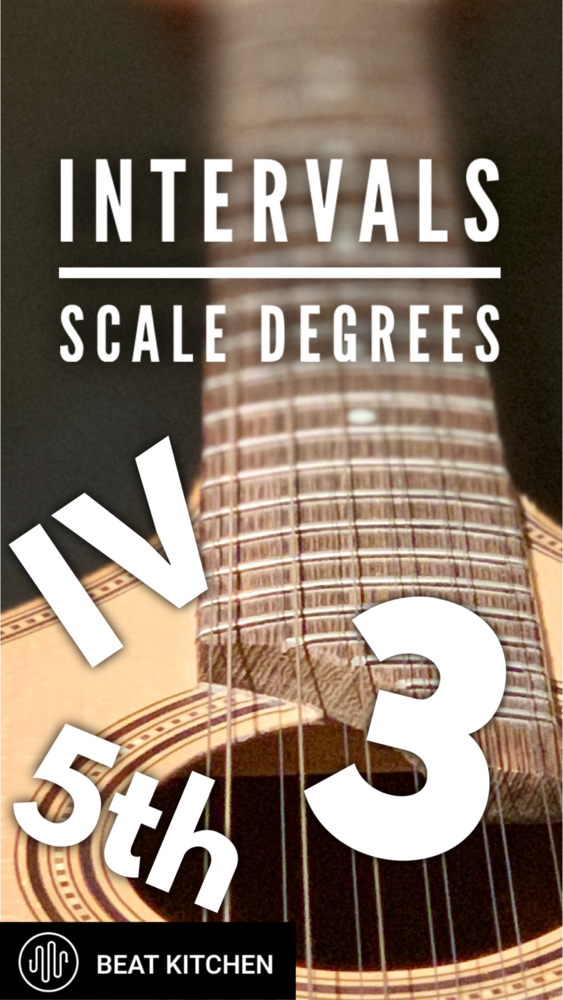Sometimes the naming conventions in music theory almost seem cruel. The use of numbers to describe intervals, chord tones, scales degrees come to mind, but I can’t really think of a better way to say it, so let’s try and shed some light on the subject. Every chord is a root, a third, and a fifth.
Those are intervals. They’re named that way because of their distance from the root. You can actually describe the distance between any two notes as being an interval.
In the C chord, we have an interval of a third here, and the outer interval is a fifth. The distance between the third and the fifth is also a third. Count up the scale.
One, two, three. So with intervals, we use regular old Arabic numbers, but chords are built off of scale degrees, and a scale always has a home plate. So to help us keep that straight, we give scale degrees a Roman numeral.
For example, in the key of C, F is always the fourth scale degree, and here’s where it gets muddy. An F chord when you’re in the key of C has a root of F, but it also has its own third and its own fifth. Just remember that every chord is built off of some degree of somebody’s scale, and it could actually live in more than one scale.
For example, an F chord is the four in the key of C. It’s also the one in the key of F. It’s also the five in the key of Bb.
But either way, it always has a root, a third, and a fifth as its ingredients. If you want to talk more about this, you should join our upcoming musician basics elective. And if someone who belongs in a Beat Kitchen class, share this post.

